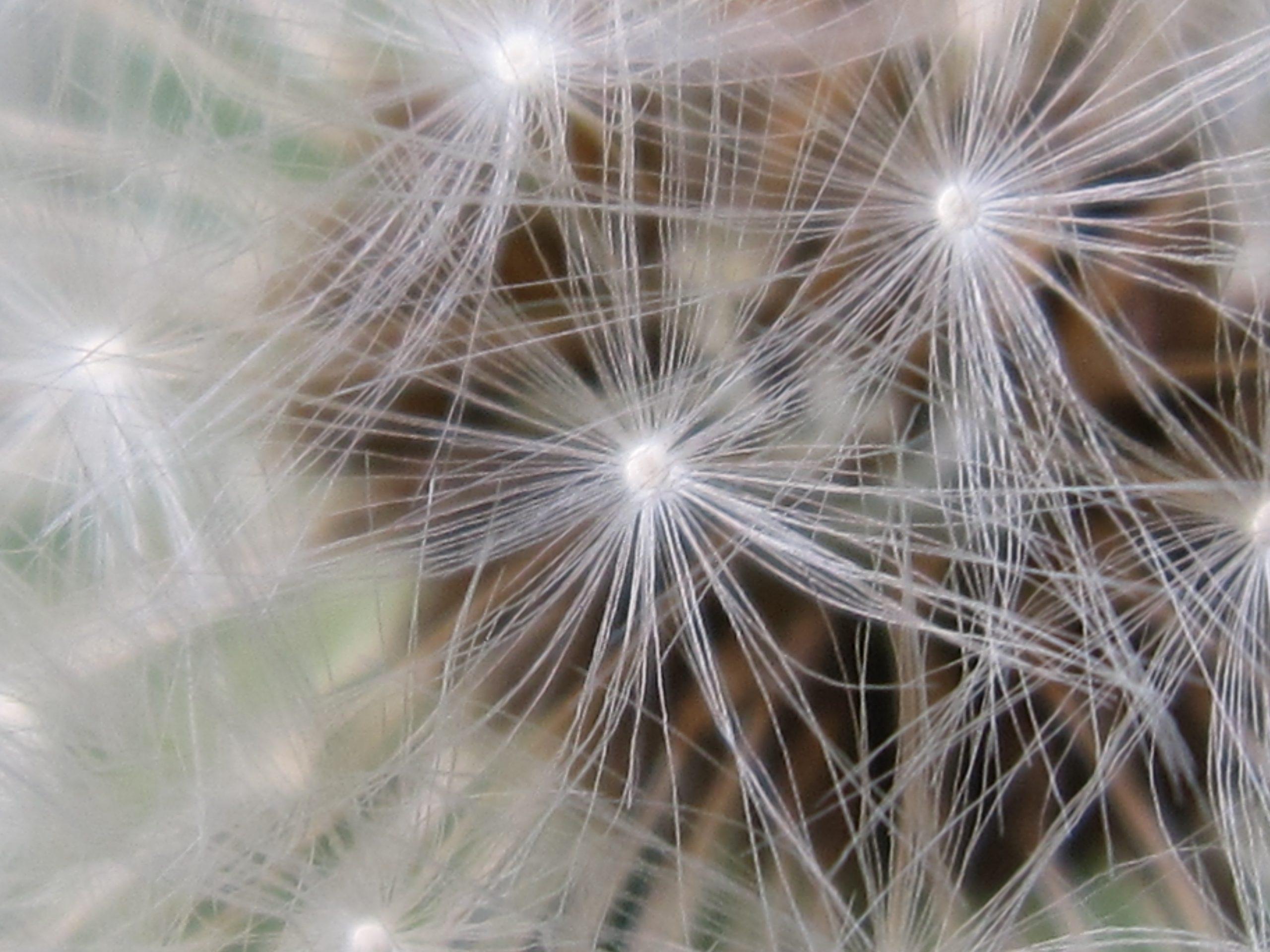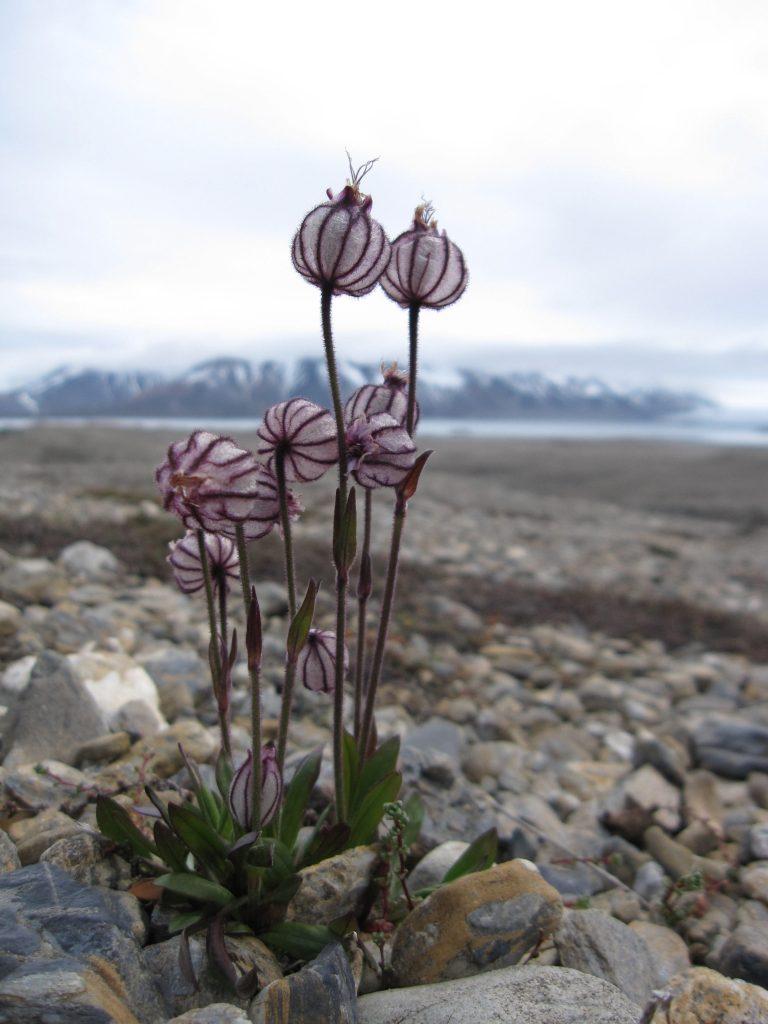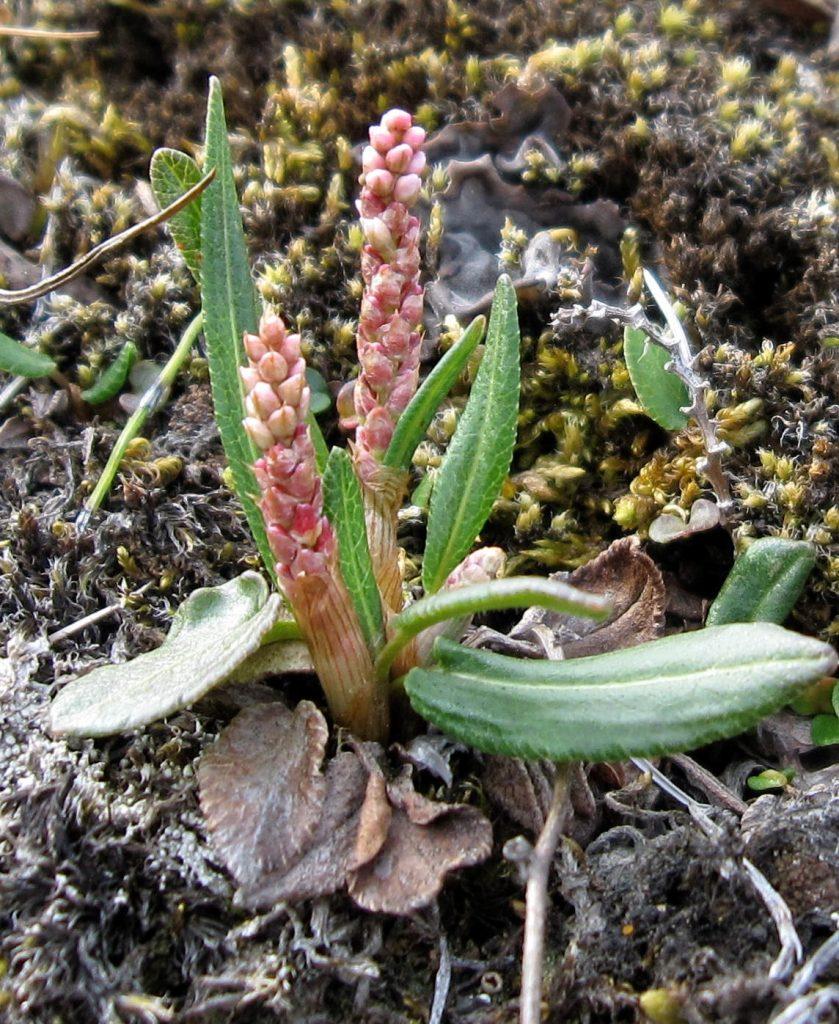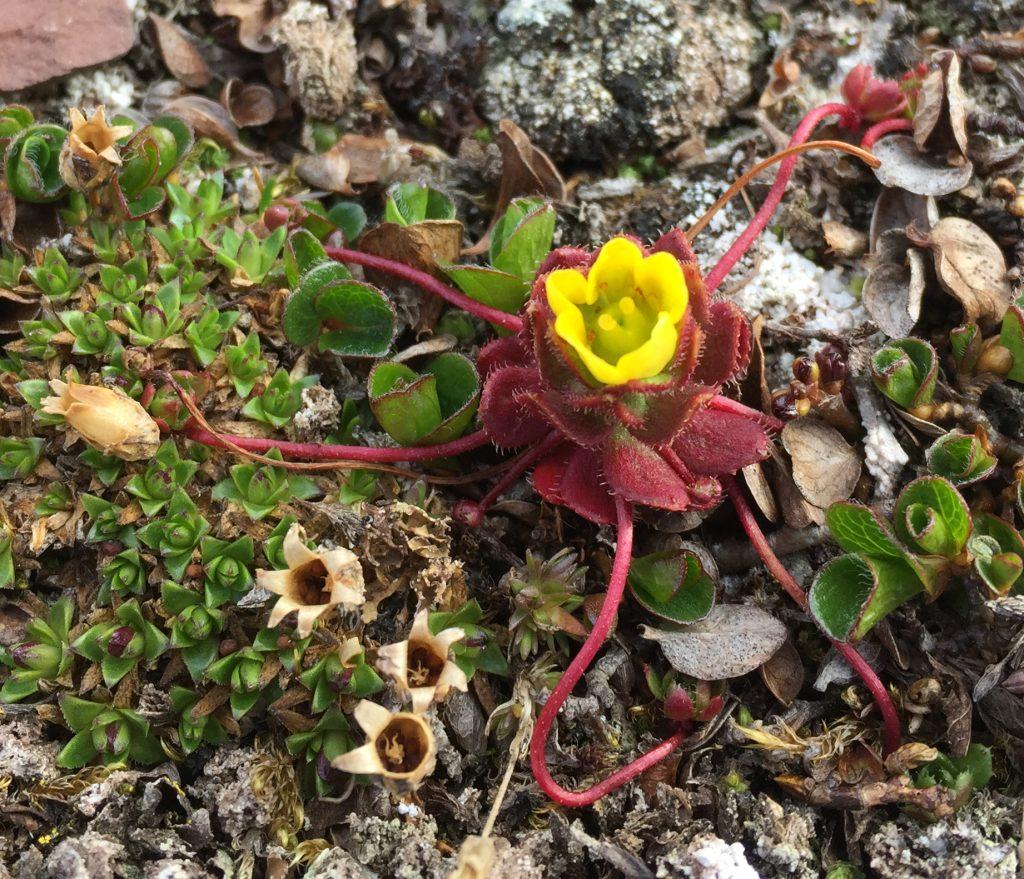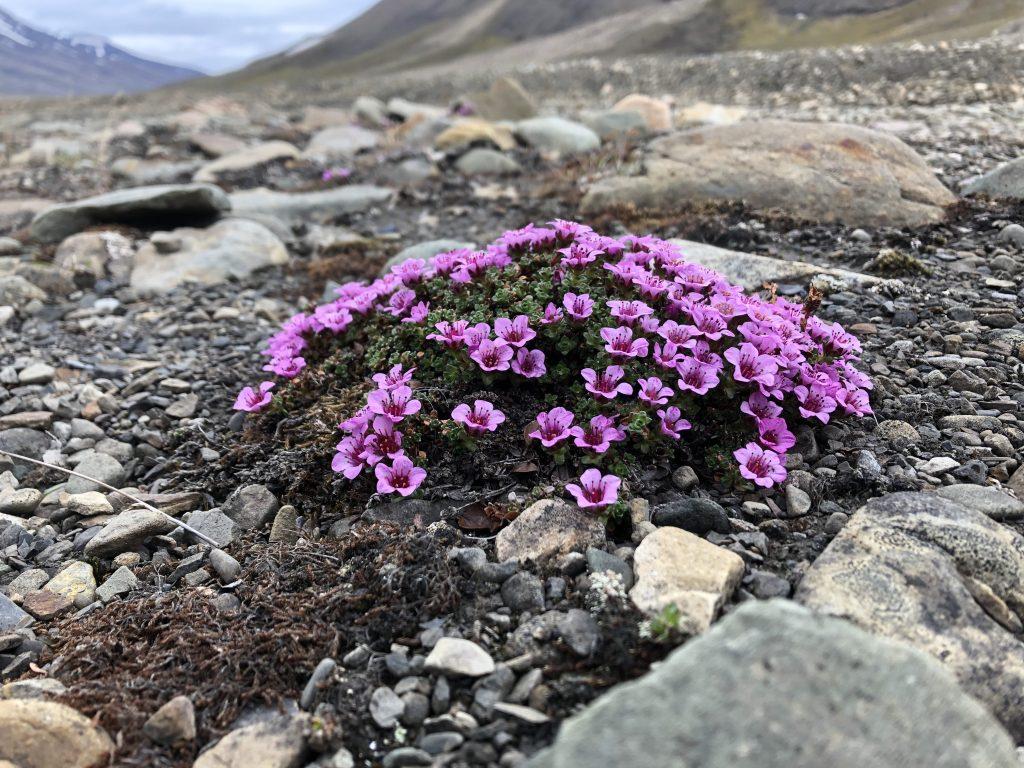The arctic growing season is very short. To cope with the time squeeze, most arctic plants have evolved flexible life histories. Mixed mating systems are common; having the possibility to both sexual and asexual reproduction. As most arctic plants are long-lived perennials, they may allocate resources over several years. Pre-formation of flower buds several years ahead are common; they may survive bad summers by vegetative growth and reproduce sexually in good ones.
Short growing season favour asexual reproduction
Although sexual reproduction is the first choice for most animals and plants (Maynard Smith, 1978, Hurst & Peck, 1996, Otto & Gerstein, 2006), the number of plant species with the possibility of asexual reproduction increases towards the poles (Bierzychudek, 1985, Johnson et al., 2010) through structures like bulbils, stolons, or vivipary. Asexual reproduction is usually less risky; more offspring are produced with less investment, and the next generation is as fit to the hostile conditions as the former (Jonsson et al., 1996, Zhang & Zhang, 2007). Asexual reproduction is also an advantage during colonisation and establishment of a new area, as finding a mate for sexual reproduction may be difficult or even impossible (Johnson et al., 2010). If a plant is insect pollinated, it also needs a suitable pollinator, and pollinators are both fewer and less active in the Arctic. Thus, if it manages to reproduce all by itself, the chances to succeed will increase significantly.
Asexual species do well when conditions are stable but provides no recombination. The genetic diversity will decrease over time, making adaptation to change difficult. Although mutations will still occur, most mutations are not beneficial. Thus, the mutation load of asexual lineages increases with age (Neiman et al., 2010). In addition, vegetative clones are usually poor dispersers.
Sexual reproduction worth the investment in the long run
Sexual reproduction, on the other hand, increases genetic diversity and enables increased fitness through recombination. Seeds are also persistent structures that can survive for years and contribute to seed banks. On the downside, it requires more time, more energy, and someone to mate with. To overcome the latter, most arctic plants have the possibility of selfing (self-pollination) (Brochmann & Steen, 1999). Selfing is however the most extreme form of inbreeding and provides less genetic diversity than outcrossing. But if there is no one else to mate with, some reproduction is usually better than no reproduction (Brochmann & Steen, 1999).
Photo: Pernille Bronken Eidesen
For insect-pollinated species, a lack of pollinators can be a challenge. Both density and activity of pollinators are low in High Arctic environments (Philipp et al., 1990), and Svalbard lacks efficient pollinators such as bees and bumblebees (Coulson, 2007). In high-arctic regions most pollinators are less efficient generalist, such as flies and midgets. The low temperatures also reduce the activity of the few pollinators present. As a result, the presence of efficient pollinators like bumble bees (Bombus sp.) has a profound effect on distributions of insect-pollinated plants in the Arctic (Eidesen et al., 2017). It is more difficult to colonize new areas if a plant are dependent on a certain type of pollinator. This may also explain why the number of wind-pollinated species increases with latitude. Wind is never in short supply in the Arctic.
Despite the challenges, most arctic plants maintain the possibility of sexual reproduction. Modelling has shown that even if a plant rarely manages to reproduce sexually, these rare events make a big difference. One only need a small number of sexual, outcrossing individuals per generation to make an apparently asexual population highly genotypically variable (Bengtsson, 2003). As most arctic plants are long-lived perennials, they may allocate resources over several years. They may survive bad summers by vegetative growth and reproduce sexually in good ones. Pre-formation of flower buds several years ahead are also common. This enables fast onset of flowering in spring and increases the chance of developing ripe seeds within one season (Crawford, 2013).
Available pollinators and level of pollinator dependence influence flower colour
Flies lies like yellow, bees like blue, and being white is the least investment. The investment in blue-purple flower colour is associated with attraction of more efficient pollinators such as bees and bumblebees. Flies and midgets prefer yellow- and white coloured flowers (Garcia et al., 2022). Eidesen et al (2017) showed that (re)colonization of former glaciated areas by plant species with blue-purple flowers were partly constrained by pollinator deficiency. Plant species with white flowers showed an opposite trend in distribution to species with blue-purple flowers. Less pollinator dependency due to alternative reproduction modes and increased level of selfing may explain the high abundance of white-coloured flowers in Arctic regions. Pigment production without the benefit of pollination to offset the energy cost may reduce fitness under marginal arctic conditions (from Eidesen et al 2017).
Examples of asexual reproduction
Photo: Pernille Bronken Eidesen
“Clonal reproduction is not a substitute for sex but merely prolongs the time to extinction when sex is absent” (Silvertown, 2008).”
Dryas octopetala have large petals and parabola-shaped flowers, which focus solar radiation towards the gynoecium and increase its temperature on sunny days, resulting in more insect visitation and higher chance of being pollinated. They are 'open access' flowers used by all sorts of insects.
Photo: Pernille Bronken Eidesen
Photo: Pernille Bronken Eidesen
Bengtsson BO (2003) Genetic variation in organisms with sexual and asexual reproduction. Journal of Evolutionary Biology 16: 189-199.
Bierzychudek P (1985) Patterns in plant parthogenesis. Experientia 41: 1255-1264.
Brochmann C & Steen SW (1999) Sex and genes in the flora of Svalbard – implications for conservation biology and climate change. Det Norske Videnskaps-Akademi I Matematisk-Naturvitenskapelig Klasse Ny Serie 38: 33-72.
Coulson SJ (2007) Terrestrial and freshwater invertebrate fauna of the High Arctic archipelago of Svalbard. Zootaxa 41-68.
Crawford RMM (2013) Demography and reproduction. (Crawford RMM, ed.) p.^pp. 0. Oxford University Press.
Eidesen PB, Little L, Müller E, Dickinson KJM & Lord JM (2017) Plant-pollinator interactions affect colonisation efficiency: abundance of blue-purple flowers is correlated with species richness of bumblebees in the Arctic. Biological Journal of the Linnean Society 121: 150–162.
Gabrielsen TM & Brochmann C (1998) Sex after all: high levels of diversity detected in the arctic clonal plant Saxifraga cernua using RAPD markers. Molecular Ecology 7: 1701-1708.
Garcia JE, Hannah L, Shrestha M, Burd M & Dyer AG (2022) Fly pollination drives convergence of flower coloration. New Phytologist 233: 52-61.
Gehring JL & Delph LF (1999) Fine-scale genetic structure and clinal variation in Silene acaulis despite high gene flow. Heredity (Edinb) 82 (Pt 6): 628-637.
Hurst LD & Peck JR (1996) Recent advances in understanding of the evolution and maintenance of sex. Trends Ecol Evol 11: 46-52.
Johnson MTJ, Smith SD & Rausher MD (2010) Effects of Plant Sex on Range Distributions and Allocation to Reproduction. New Phytologist 186: 769–779.
Jonsson BO, Jónsdóttir IS & Cronberg N (1996) Clonal diversity and allozyme variation in populations of the arctic sedge Carex bigelowii (Cyperaceae). Journal of ecology 84: 449-459.
Maynard Smith J (1978) The evolution of sex. Cambridge University Press, Cambridge.
Neiman M, Hehman G, Miller JT, Logsdon JM, Jr. & Taylor DR (2010) Accelerated mutation accumulation in asexual lineages of a freshwater snail. Mol Biol Evol 27: 954-963.
Otto SP & Gerstein AC (2006) Why have sex? The population genetics of sex and recombination. Biochem Soc Trans 34: 519-522.
Philipp M, Böcher J, Mattsson O & Woodell SRJ (1990) A quantitative approach to the sexual reproductive biology and population structure in some artic flowering plants: Dryas intergrifolia, Silene acaulis and Ranunculus nivalis. Meddeleser om Grønland, Bioscience 34: 60.
Silvertown J (2008) The evolutionary maintenance of sexual reproduction: Evidence from the ecological distribution of asexual reproduction in clonal plants. Int J Plant Sci 169: 157-168.
Zhang Y & Zhang D (2007) Asexual and sexual reproductive strategies in clonal plants. Frontiers of Biology in China 2: 256-262.


